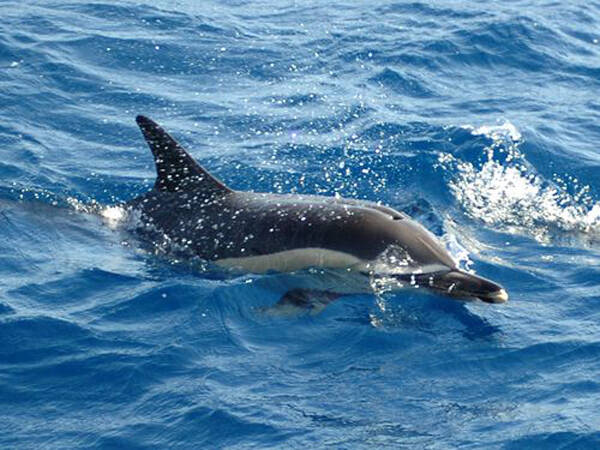Indopacetus pacificus
IUCN
LCBasic Information
Scientific classification
- name:Indopacetus pacificus
- Scientific Name:Longman's beaked whale, Pacific beaked whale, Indo-Pacific beaked whale
- Outline:Cetacea
- Family:B.whales I.b.whales
Vital signs
- length:7-7.5m
- Weight:No verification information
- lifetime:No verification information
Feature
There is a pair of teeth at the front of the lower jaw
Distribution and Habitat
The first skull was found in 1882 at Mackay, northeast Queensland, Australia; it was from this skull that Longman named the species in 1926. The second skull was found in 1955 on the floor of a fertilizer factory in Mogadishu, Somalia; it was later discovered that a fisherman had found it on a beach near Danane, northeastern Somalia. These widely separated locations suggest that Long's beaked whales may have been distributed in both the Indian and Pacific Oceans. Several possible sightings of unidentified beaked whales in tropical waters of both oceans may support this idea. Based on what is known about other species of beaked whales and the fact that there are few documented sightings, Long's beaked whales should live in deep, pelagic waters.
Appearance
In 1980, a senior whale watcher found two light grey Lang's beaked whales in the waters near the Seychelles in the Indian Ocean: one was estimated to be 7.5 meters long and the other was about 4.6 meters long. Both had long beaks and wide tail fins with straight rear edges. The length of the newborn is unknown, and the adult is 7-7.5 meters.
Male The skull shows a distinct beak, a single blowhole, a small dorsal fin that may be located in the center behind the body, and there may be no concave in the center of the tail fin. There are two forward-leaning teeth at the front of the lower jaw, and the laryngeal ventral folds are V-shaped. The body may be spindle-shaped. The body color is unknown, but there may be scratches and scars. According to the two small tooth holes, it is known that it has teeth, a long beak, a turban-shaped cheek bone, and a significant bulge on the side of the upper jaw.
Details
Longman's Beaked Whale (Scientific Name: Indopacetus pacificus) is also known as Longman's Beaked Whale (English), Baleine à bec de Longman (French), Zifio de Longman (Spanish), formerly known as Longman's Beaked Whale, also known as Pacific Beaked Whale and Indo-Pacific Beaked Whale. It can be said to be the most mysterious species in the order Cetacea. The existing specimens are only two weathered skulls, there is no confirmed record of live observation, and even a complete corpse has never been seen. It was first published by H. A. Longman under the name Mesoplodon pacificus, based only on a skull and lower jaw found on a beach in Queensland, Australia in 1882. At that time, the scientific community suspected that the skull might be a subspecies of True's Beaked Whale, or an adult female southern bottlenose whale. In 1955, a second skull specimen of Lang's beaked whale was found on the beach of Somalia. In 1968, Joseph Curtis Moore, a beaked whale expert at the Field Museum in Chicago, established the classification status of Lang's beaked whale as an independent species and created a new genus, Indopacetus, which means that this whale species lives in the Indian and Pacific Oceans. Some scholars do not agree with the above classification and still place it in the genus Mesoplodon. There have been sightings of unknown whales in the tropical waters of the Indian and Pacific Oceans, usually called "tropical bottlenose whales", which may be Lang's beaked whales.

Listed in the second level of the "List of Nationally Protected Wildlife in China".
Protect wildlife and eliminate game.
Maintaining ecological balance is everyone's responsibility!








